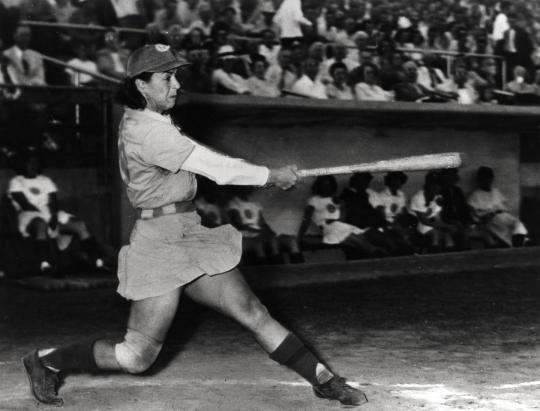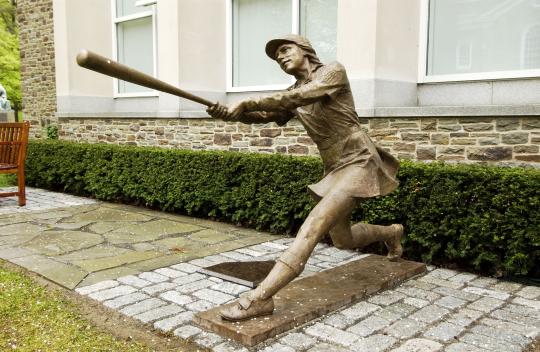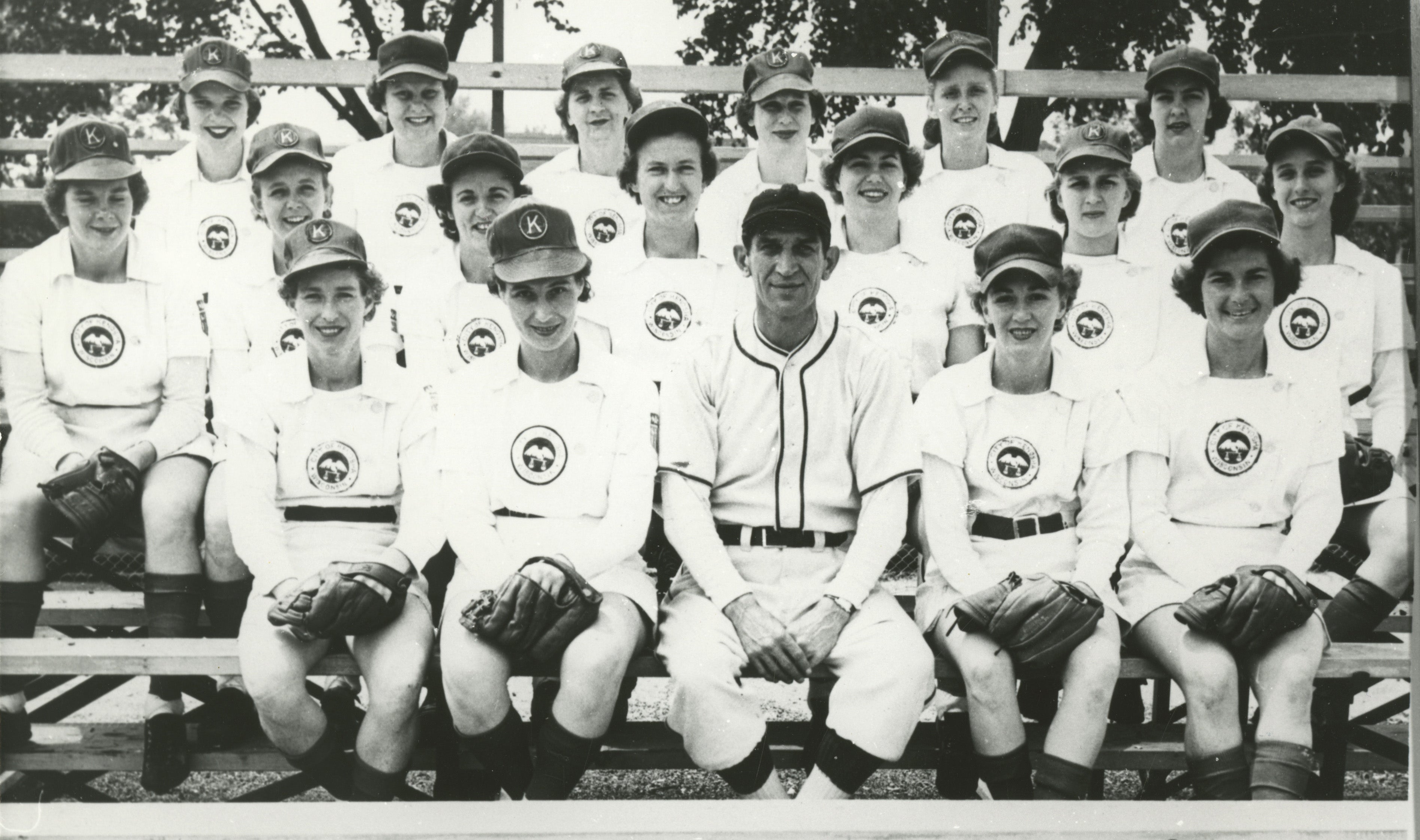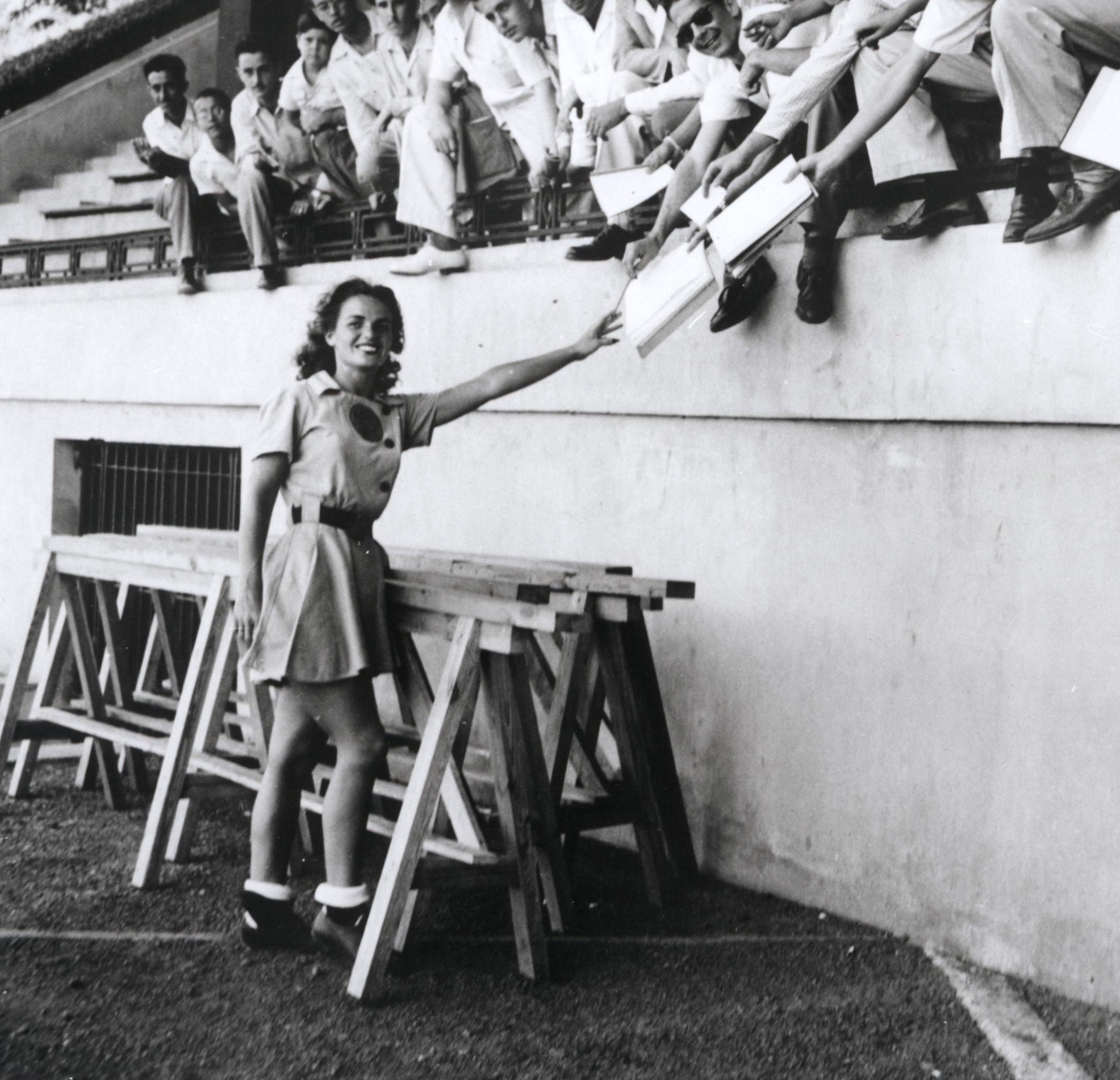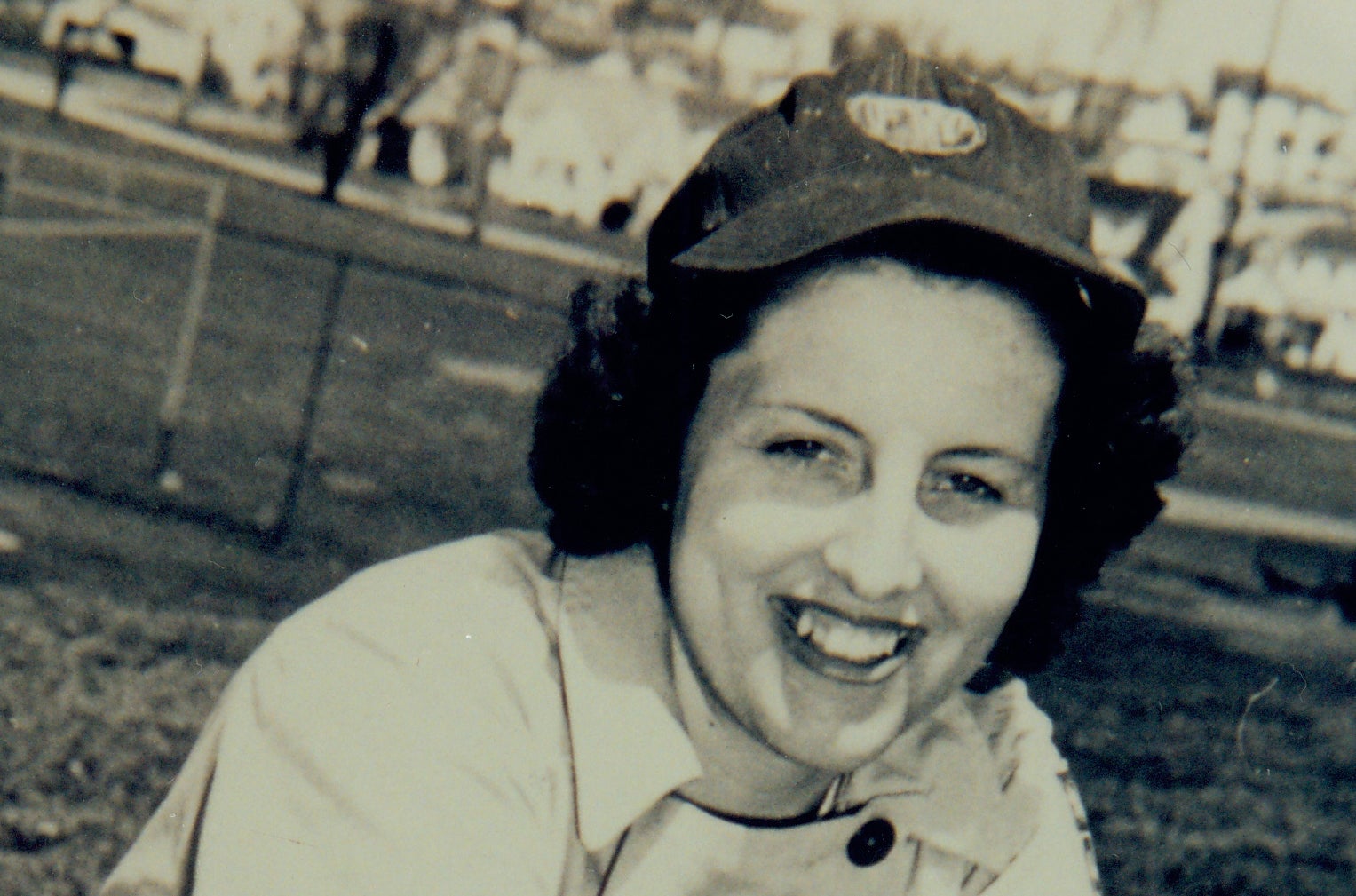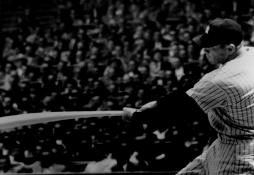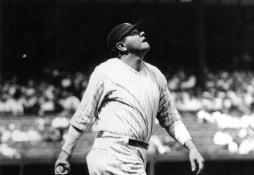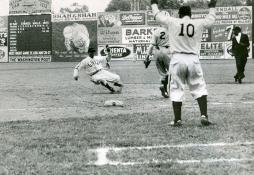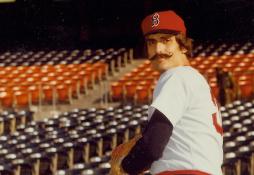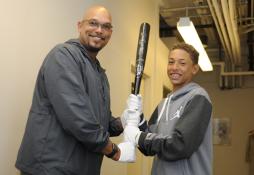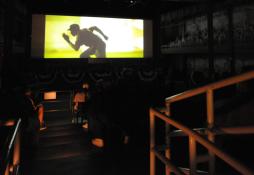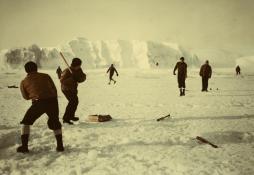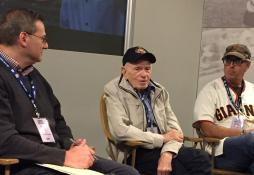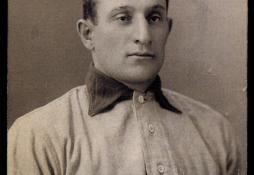“She owned home plate. She was a rough and tough catcher.”
- Home
- Our Stories
- A Catcher’s Courage
A Catcher’s Courage
In one of the most dramatic scenes in the 1992 film A League of Their Own, a messenger delivers a telegram from the War Department to the players in the clubhouse just before a game. Manager Jimmy Dugan (Tom Hanks) grabs the telegram from the kid, and walks slowly across the room before finally delivering it to the unlucky player, who is escorted out in tears by the team’s chaperone. She won’t be playing that day.
The incident seems based on the life of Dorothy “Mickey” Maguire Chapman, one of the league’s toughest players – except that she played that day instead of leaving in tears. The courage in the face of loss defined the players of the All-American Girls Professional Baseball League.
On June 10, 1944, Maguire, the hard-nosed catcher of the Milwaukee Chicks, took a phone call from her mother back home just before the game. Told that her husband, Corporal Thomas J. Maguire, Jr., had been killed in action in Italy, she chose not to share the news until after the game. She had only missed one game so far that year, and would catch the second game of a doubleheader the next day. On the night that she learned her husband had been killed, she played and got a hit in a losing effort.
A leader on and off the field, Maguire has been described as “hard-nosed, aggressive, resilient, and spirited.” Nicknamed “Mickey” after Hall of Famer Mickey Cochrane, she was also known as “Indestructible” by her teammates. She played hard and she played hurt, which of course is always demanded of catchers. According to articles in her library file at the Hall of Fame, she “was a team player and went all out to win in every game,” and “no other catcher in the league commanded such great respect.”
Born Dorothy McAlpin, she grew up in Ohio playing ball with her brothers and in girls’ leagues. As a teenager, she went to work in a brewery and played for the company team, winning two world championships, before being signed by the AAGPBL for the inaugural season of 1943, when she led the Racine Belles to first place. Maguire did the same the following year with the Milwaukee Chicks and moved with the club to Grand Rapids for the 1945 season, before spending four years with the Muskegon Lassies, winning another league championship in 1947.
In a twist perhaps too amazing for the movies, approximately two months after learning that her husband had died, she got the surprise of a lifetime – he was in fact alive, but had lost his dog tags and been severely burned, and was unable to write to her until August 1. Corporal Maguire returned stateside and “vehemently pressed Dorothy to quit baseball to settle down at home.” Maguire declined the offer, and by 1945, they were divorced.
In 1948, she married George Chapman, with whom she would have five sons and a daughter before that marriage also ended in divorce. One of those children was Rick Chapman of Kansas City. The kids noticed that their mother had quite an arm in backyard games of catch, but she rarely said anything more than that she used to play baseball. Upon Dorothy’s death in 1981, Rick discovered her scrapbooks and memorabilia in the attic and was stunned to learn of the extent of her career.
“She owned home plate. She was a rough and tough catcher,” Rick says of his mother. “She always played hurt and did not want to miss any games.”
Maguire played until 1949, and upon her retirement, she received a standing ovation from the 6,000 fans in attendance at her final game, a 5-2 victory. “I’ve had enough baseball for anyone’s lifetime,” she said. “It will be a relief to get away from ankle injuries, black eyes, strawberries and the other bruises one gets constantly in playing the game.”
In addition to probably inspiring the telegram scene in the movie, Dorothy Maguire has cut a wide swath through popular culture. She was a central figure in Dan Gutman’s children’s chapter book “Mickey and Me: A Baseball Card Adventure,” in which a young man travels back in time to meet Mickey Mantle, but instead meets “Mickey” Maguire, and comes away with newfound respect for the AAGPBL. A photo of Dorothy was also used in the booklet for the American Girl Doll of Molly, a la 1944.
Lastly, an evocative photograph of Maguire, showing her classic swing, seems to have been used by sculptor Stanley Bleifeld as the basis for his 2006 statue “Woman at Bat,” which graces the courtyard in Cooper Park, outside the Hall of Fame. “That sure looks like Mom, but the statue is dedicated to all women in baseball and their contributions. No one player is singled out,” says Chapman.
This seems fitting for a league whose motto was “All for one and one for all.”
Tim Wiles is the former director of research at the National Baseball Hall of Fame and Museum

